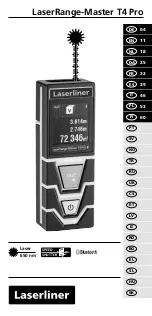
© PCE Instruments
33
The follow ing should be considered w hen looking for a good measuring position:
(1) Install the sensors on a preferably long, straight pipe w hich is completely filled w ith the liquid
and does not contain any air bubbles.
(2) Make sure that the liquid and thus the pipe is not too hot for the sensors. The temperature
should be as similar to the room temperature as possible.
(3) Consider fouling of the pipes. If possible, choose a clean or new pipe for measurement. You
can also clean the pipe. If this is not possible, consider the thickness of the fouling as part of
the liner.
(4) Some pipes have a synthetic liner. There can be a boundary layer betw een the outer pipe
and the liner. This boundary layer can divert or w eaken the ultrasonic w aves, which will
make a measurement very difficult. If possible, these types of pipes should be avoided. If this
is not possible, sensors can also be built into the pipe.
Sensor installation
The PCE-TDS 100H/HS has piezoelectric sensors w hich can transmit and also receive ultrasonic
w aves. The time the ultrasonic w aves take to pass through the pipe w alls and the liquid allow s
conclusions about the flow velocity. As the transit time of the ultrasonic pulses is very short, the sensors
should be installed as precisely as possible to ensure highest system accuracy.
Take the follow ing steps to install the sensors:
(1) Some pipes have a plastic liner. There can be a boundary layer betw een the outer diameter
of the pipe and the inner liner. This boundary layer can divert or w eaken the ultrasonic
w aves. In this case, an accurate measurement w ill be very difficult. If possible, these types of
pipes should be avoided.
(2) Find an ideal position in the piping system, i. e. a straight section w ith new and clean pipes,
if possible.
(3) It is very important that the pipes are clean. Grind or polish the locations w here you w ould
like to place the sensors.
(4) If a pollution cannot be removed, its thickness should be considered as part of the liner of
the pipe.
(5) There must not be an air gap betw een the sensors and the surface of the pipe. Attach the
sensors using sufficient contact gel.
(6) Moreover, you should make sure there is no dust or sand betw een the pipe and the sensor.
To avoid air bubbles from causing measurement errors, place the sensors on the pipe
laterally.
E
n
g
lis
h









































